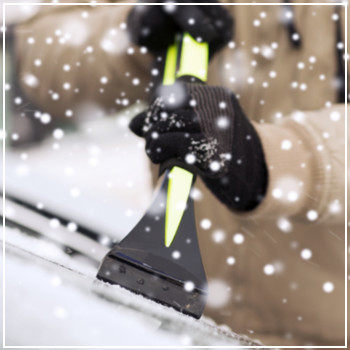 Living in New England means dealing with the brunt of winter weather, from snow piling up on your car to driving on icy, salt-sprinkled roads. While we often focus on the dangers of snow and slush, ice presents its own set of challenges. Below freezing temperatures bring unique risks that go beyond simply losing traction on black ice. Let's explore some of these lesser-known hazards and how to mitigate them.
Living in New England means dealing with the brunt of winter weather, from snow piling up on your car to driving on icy, salt-sprinkled roads. While we often focus on the dangers of snow and slush, ice presents its own set of challenges. Below freezing temperatures bring unique risks that go beyond simply losing traction on black ice. Let's explore some of these lesser-known hazards and how to mitigate them.
Ice Build-Up on Your Vehicle
A layer of ice on your car isn't just unsightly—it can actually be quite damaging. Unlike snow, which can sometimes be brushed off relatively easily, ice forms a stubborn, hard shell that’s tough to remove without causing harm. If you find yourself unable to scrape the ice off, resist the urge to grab your scraper for anything other than the windows. The edges of a scraper are sharp enough to scratch paint, which can lead to rust and corrosion over time.
One common mistake people make is trying to melt ice with hot water. While this might seem like a quick fix, it’s actually a terrible idea. Hot water can cause your car’s glass to crack or shatter if there’s a sudden temperature change. Plus, once the melted ice drips off your car, it can refreeze on your driveway or parking spot, creating a whole new problem. Instead, start by manually removing larger chunks of ice with your hands or brushing them off gently. Turning on your car’s heater can help speed up the melting process from the inside, making it easier to clear the remaining ice.
Projectiles of Flying Ice
Ever been driving behind someone who didn’t properly clear their car of ice, only to have a chunk fly off and narrowly miss your windshield? It happens more often than you’d think. If ice isn’t completely removed before hitting the road, it can break loose and become a flying projectile, especially at higher speeds. In stop-and-go traffic, these chunks can end up damaging the vehicles around you—cracking windshields, denting panels, or even tearing off side mirrors. And let’s not forget the scratches that ice can leave on your car’s paint job. In extreme cases, a large piece of ice flying off at high speed could cause you to lose control of your vehicle, leading to accidents.
Even in parking lots, the danger persists. Icicles hanging from buildings or gutters can break off and fall onto parked cars, potentially causing serious damage. If you’re parking your car during the winter, consider choosing spots away from overhangs or tall structures that might pose a falling-ice hazard. For those responsible for maintaining buildings, regular cleaning of roofs and gutters is essential to prevent accidents.
Slipping and Sliding on Black Ice
Black ice is a notorious winter hazard, and for good reason. Even if you’re driving cautiously and at reduced speeds, it can catch you off guard. One moment you’re cruising along smoothly, the next you’re skidding out of control, possibly colliding with something—or worse, someone else. Whether it’s a fender bender or a full-on collision, black ice incidents can lead to costly vehicle repairs and injuries.
If you’ve found yourself in an ice-related accident, or if your car has sustained damage due to ice—whether from scraping too roughly or having a chunk of ice fall on your windshield—reach out to DaSilva’s team. They’ll handle your repairs quickly and efficiently. Give them a call today to schedule an appointment.
Winter driving requires extra caution, but with a bit of preparation and awareness, you can minimize the risks. Keep your car ice-free, stay alert on the road, and always wear your seatbelt. After all, safety is the number one priority!
Carpet Film,Pe Plastic Masking Film,Scratch Protection Film,Transparent Protection Film
Wuxi Xinhao Protective Film CO.,Ltd , https://www.cotton-balewrap.com